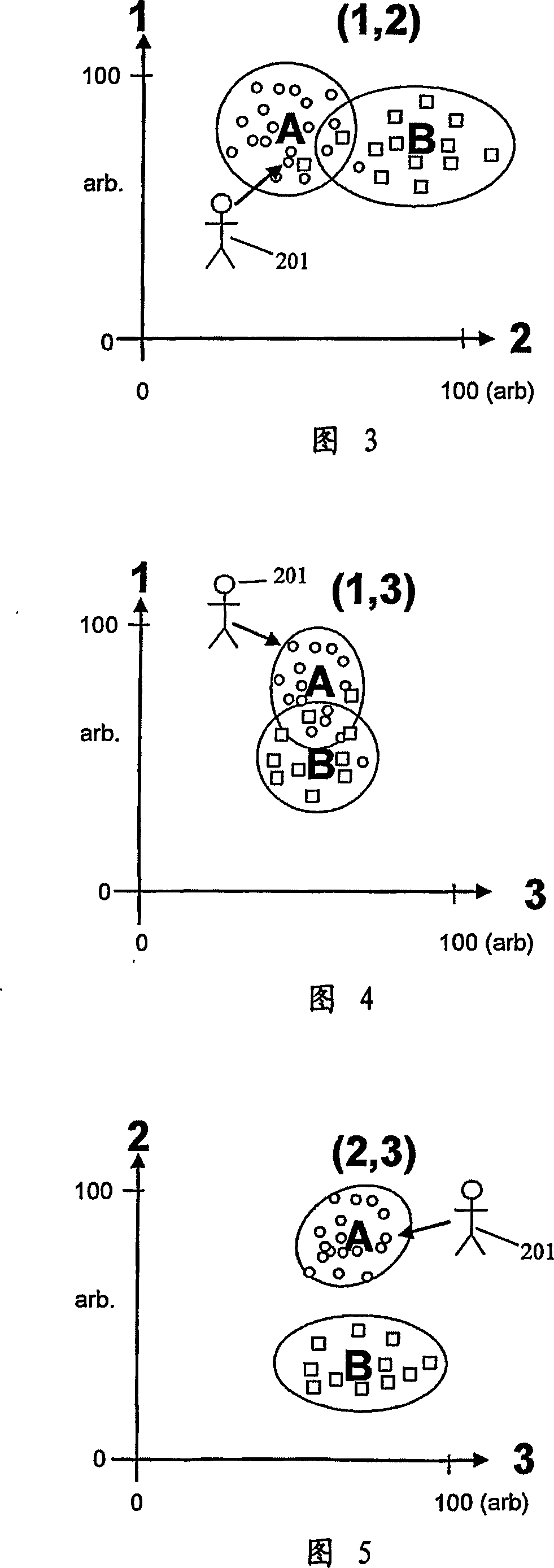A method and a system for assessing neurological conditions
A neurological disease and nerve technology, applied in the field of generating neurological disease identification signals, can solve the problems of identification impossible, undisclosed identification objects, etc.
- Summary
- Abstract
- Description
- Claims
- Application Information
AI Technical Summary
Problems solved by technology
Method used
Image
Examples
Embodiment 1
[0101] Suppose we have two reference groups, group A and group B, where f={1,2,3} is the feature group used, and N=2 is the combination parameter that determines the number of features to be combined (for example, two Features can be combined or three features, etc.). The group of all non-repetitive combinations of these features will be V = {(1, 2), (1, 3), (2, 3)}, that is, the first element is the combination of feature 1 and feature 2, and the second One is a combination of feature 1 and feature 3, etc. Based on the above, (1, 2) is the first characteristic, (1, 3) is the second characteristic, and (2, 3) is the third characteristic. Figures 3 to 5 exemplarily show the possible distribution of all reference objects in group A and group B. Figure 3 shows the statistical distribution of characteristics (1, 2) for groups A and B, where the reference objects in these groups are plotted based on ("1", "2") feature values (ie, "1" is Feature 1 value, "2" is feature 2 value). Area ...
Embodiment 2
[0106] The efficiency of the present invention has been verified in clinical trials. Participants were divided into two groups in this experiment. One group consisted of older subjects who had been diagnosed with mild to moderate Alzheimer's dementia (AD group). Another age-matched group consisting of 10 healthy individuals (ie non-AD individuals) served as the control group.
[0107] Participants in the AD group consisting of patients conducted a clinical follow-up survey of memory in the Department of Geriatrics at Landspitali University Hospital, Reykjavik, Iceland (Landspitali University Hospital, Reykjavik, Iceland). This group consisted of Alzheimer's patients (AD) (N=10) according to ICD-10. The other group consisted of control participants in the journey (N=10) who were recruited from relatives who participated in the day care center for dementia patients.
[0108] Why meet the criteria for participating in the study, these subjects need to be in the range of 60 to 80 year...
PUM
 Login to View More
Login to View More Abstract
Description
Claims
Application Information
 Login to View More
Login to View More - R&D
- Intellectual Property
- Life Sciences
- Materials
- Tech Scout
- Unparalleled Data Quality
- Higher Quality Content
- 60% Fewer Hallucinations
Browse by: Latest US Patents, China's latest patents, Technical Efficacy Thesaurus, Application Domain, Technology Topic, Popular Technical Reports.
© 2025 PatSnap. All rights reserved.Legal|Privacy policy|Modern Slavery Act Transparency Statement|Sitemap|About US| Contact US: help@patsnap.com



